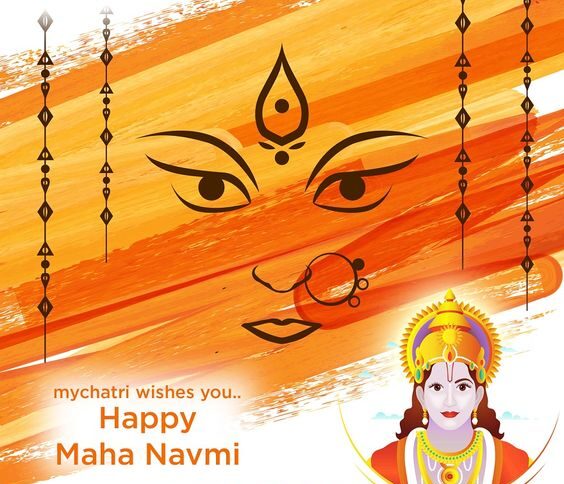Introduction
Navratri, one of India’s most celebrated festivals, signifies nine nights of devotion, dance, and divine energy. Navmi, the ninth day of Navratri, is a day of paramount importance. In this blog, we will explore the significance of Navratri Navmi and how devotees celebrate this day, marking the culmination of the festival. We’ll delve into the rich traditions and spiritual essence that make this day truly special.
Navratri: A Festival of Divine Energy
Navratri, derived from the Sanskrit words “nav” (nine) and “ratri” (night), is celebrated in reverence of Goddess Durga and her various forms. This vibrant festival typically falls in September or October and extends over nine days and nights. Navmi, the ninth day, is the climax of spiritual devotion and celebration of the goddess’s divine presence.
Spiritual Significance of Navmi
Navratri Navmi holds deep spiritual significance as it symbolizes the culmination of the goddess’s divine power over the nine nights. Devotees have been relentlessly worshipping the goddess and seeking her blessings throughout the preceding days. On Navmi, their prayers and devotion reach their zenith, celebrating the ultimate triumph of good over evil.
Cultural Traditions on Navratri Navmi
- Kanya Pujan: One of the most significant rituals on Navmi is Kanya Pujan, also known as the ritual of worshiping young girls. Devotees invite nine young girls, symbolizing the nine forms of Goddess Durga, to their homes. These girls are considered embodiments of the goddess and are revered with offerings of clothes, food, and gifts. The ritual symbolizes the recognition of the divine feminine energy.
- Celebratory Dance: Navmi is marked by energetic and celebratory dances, often in the form of Garba and Dandiya Raas. People gather in beautifully decorated venues, don traditional attire, and dance to the beat of the dhol (drum) and the melodious tunes of traditional songs. The dance signifies the joy and enthusiasm of celebrating the goddess’s divine presence.
- Fasting and Worship: Devotees continue fasting on Navmi, abstaining from grains and specific foods. They visit temples dedicated to Goddess Durga, offering prayers and seeking her blessings for strength, prosperity, and wisdom. Temples are adorned with exquisite decorations and lights, creating an ambiance of divinity and holiness.
- Cultural Festivities: In various regions, Navmi is celebrated with cultural festivities such as processions, traditional plays, and music performances. It is a time when communities come together to showcase their cultural heritage and artistic talents, further enhancing the festive spirit.
The Divine Victory of Vijayadashami
The culmination of Navratri on Navmi is followed by Vijayadashami, the tenth day, which is celebrated as a day of victory. It is believed to be the day when Lord Rama defeated the demon king Ravana, symbolizing the triumph of good over evil. Devotees celebrate this day with great enthusiasm and often participate in the burning of effigies of Ravana, a tradition known as “Ravana Dahan.”
Conclusion
Navratri Navmi is a day filled with deep spiritual significance and cultural richness. It signifies the culmination of devotion to Goddess Durga and the victory of good over evil. Kanya Pujan, celebratory dances, fasting, and temple visits are some of the key rituals and traditions observed on this day. As Navratri reaches its grand finale with Vijayadashami, devotees continue to celebrate the goddess’s divine presence and the eternal battle between right and wrong. Navmi is not just a festival; it’s a profound expression of spirituality and culture that brings people together to honor the divine energy that permeates our lives.

